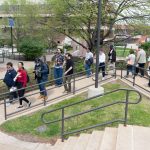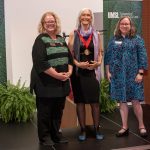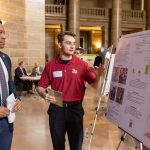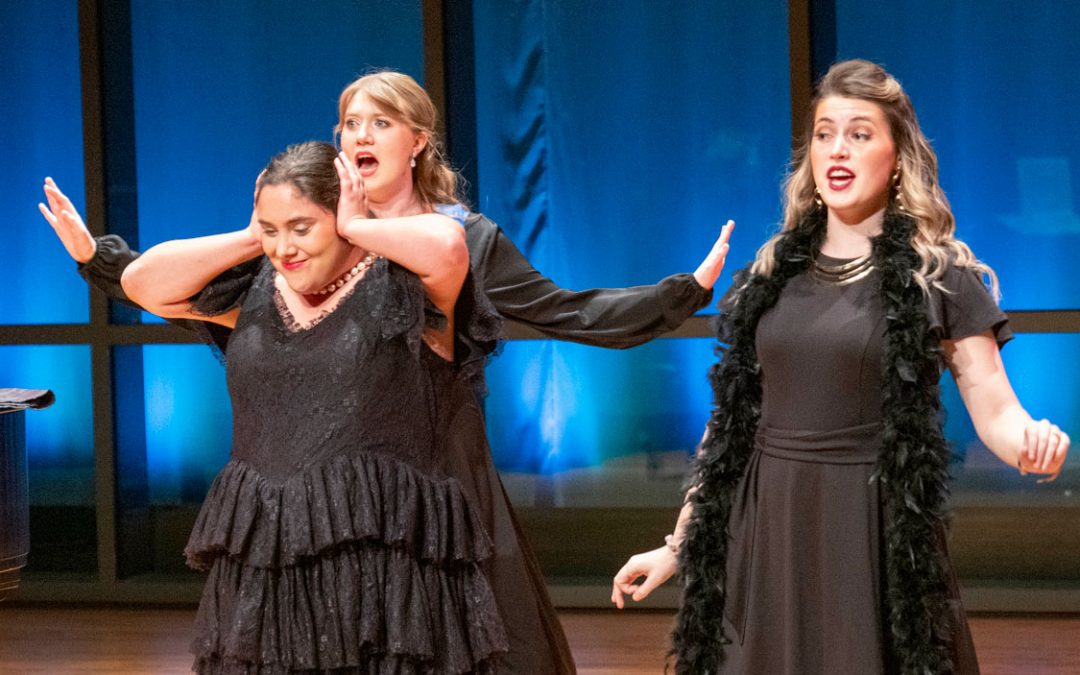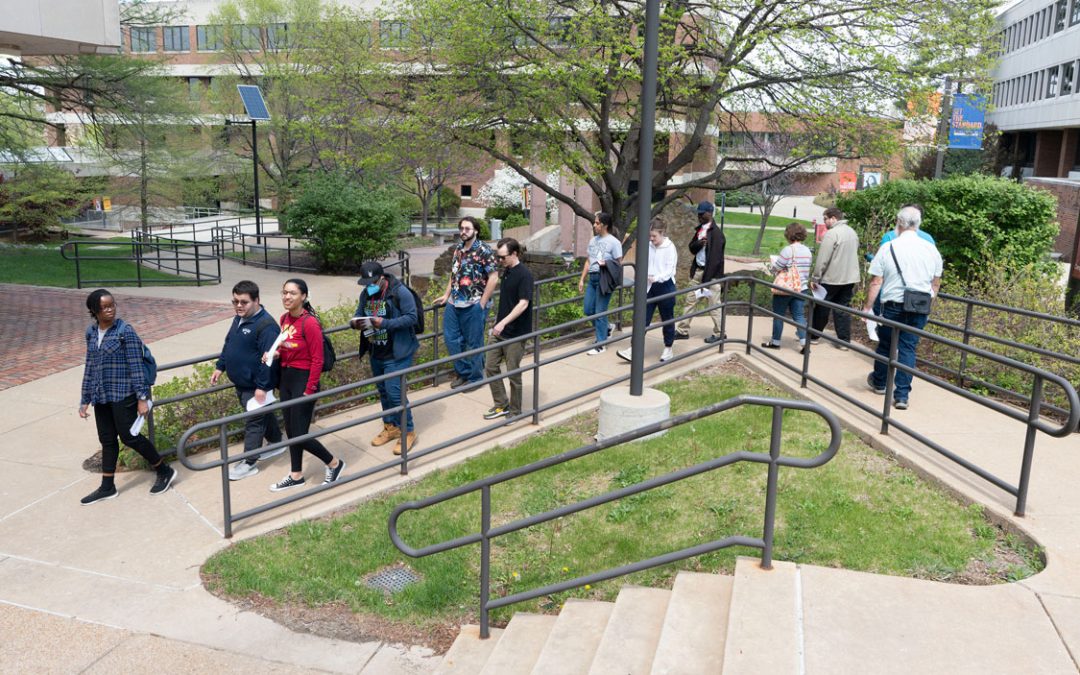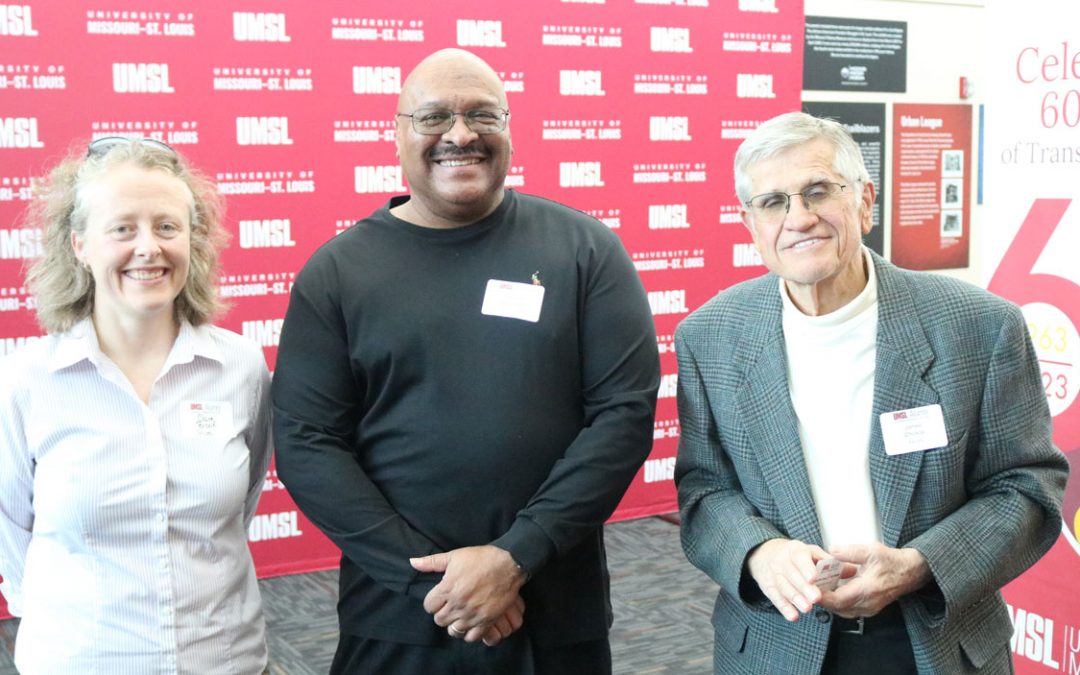
Felia Davenport, associate professor of communication and media, is part of an expanded Kranzberg Resident Artist cohort that now includes writers, visual artists and filmmakers. As a resident, Davenport will develop her “Torn Mixology” exhibit. The multimedia project will explore the tension between her multiracial identity and how society at large attempts to define her. The exhibit features handmade pieces of clothing, or “looks,” that represent points in her life. (Photo courtesy of Felia Davenport)
Since 2018, the Kranzberg Arts Foundation has funded a residency program for musicians, offering residents administrative support and regular performances at Kranzberg venues in St. Louis’ Grand Center Arts District.
This year, the foundation expanded the program from 10 to 15 residents and added writers, visual artists and filmmakers to the mix. Felia Davenport, associate professor of communication and media at the University of Missouri–St. Louis and award-winning costume designer, is part of the expanded cohort.
As a 2021-2022 Kranzberg Resident Artist, Davenport will develop her “Torn Mixology” exhibit. The multimedia project will explore the tension between her multiracial identity and how society at large attempts to define her. The exhibit features handmade pieces of clothing, or “looks,” that represent points in her life, from moments of trauma and bigotry to acceptance and celebration of her multiracial identity.
In all, she expects to produce seven looks, with each one taking about 90 to 200 hours to complete. Each look will incorporate family photos and personal artifacts into the garments and include a musical element while displayed.
Davenport was thrilled to develop the exhibit as a Kranzberg Resident Artist, especially after running into roadblocks trying to produce the exhibit in the past.
“When I applied for the residency and I got it, I was extremely excited,” Davenport said. “I was honored that someone took an interest in what I wanted to do and saw that it had value, and meeting all these other artists has been amazing. They’re really great people.”
Davenport began her journey as an artist working in several mediums.
In her youth, she was painter and vintage clothing enthusiast. The latter encouraged her to learn sewing and restructure pieces of clothing to create unique designs. Initially, she pursued painting and fashion design as a double major at Virginia Commonwealth University before switching to costume design, which perfectly combined both interests.
After earning her BFA, Davenport went on to earn an MFA in costume design from the University of Tennessee-Knoxville. She has designed costumes for theater and dance companies from St. Louis to South Africa in her professional career. Her favorite projects include “Mama Africa the Musical,” which provided her the opportunity to travel to South Africa, and the Modern American Dance Company’s production of “Dirt.”
Davenport pulled from her Black and indigenous heritage to inform her costume design for “Dirt,” which is grounded in respect for the Earth and our ancestors.
“I truly loved it,” she said. “When I watched it with the clothing, it was breathtaking. For me, it felt right, but it also felt connected.”
The idea for “Torn Mixology” came partly from previous works such as “Dirt.” About three years ago, Davenport started considering her body of work, which has a strong focus on social justice. She decided that she wanted to work on something about personal identity that was still related to social justice.
An interaction involving her daughter, Kaleesi Rose, set the project in motion.
“It was a comment someone made about my daughter,” Davenport said. “I’m a single mom, and someone made a comment about my daughter and said I had a white kid.”
The remark angered Davenport because she has raised her daughter as a woman of color who can pass for white. Davenport explained that what might be an innocuous comment to some actually erased her daughter’s culture and heritage, as well as her family history.
“It made me start remembering how I was treated growing up,” she said “I would be told that I wasn’t good enough because I wasn’t pure. I was told I was worthless because I wasn’t pure. I was told that when I would say that I was multiracial. People were telling me that I was denying my Blackness.”
It motivated Davenport to create a dialogue through her “Torn Mixology” exhibit. She wants to express the idea that words matter and have power. They don’t always bounce off people and, in fact, can hurt. She hopes it will encourage people to reconsider their biases.
To explore this idea, each custom garment will be displayed on a mannequin painted black and white with a gray stripe down the middle. The stripe represents the gray area Davenport has existed in throughout her life in juxtaposition to the simplistic black-and-white dichotomy others have tried to apply to her.
The first piece in the exhibit is its most powerful and explores Davenport’s experiences from the ages of 7 to 10. That time period is where her trauma as a multiracial person began.
“That’s why it’s called ‘The Christening,’” she said. “My sister and I were taken away from my mom. My dad sued for custody, and the judge when he asked my sister and I who we wanted to live with, we clearly said our mother. The judge explained to us – a 7-year-old and 8-year-old – that ‘colored parents,’ his words, raised ‘colored kids’ better. So my mom lost custody of us, and we moved in with our father and stepmother, who did not like us.”
The look will feature a judge’s robe with pictures of Davenport and roses quilted into the robe, which speaks to her Black and Greek heritage respectively. Other events from Davenport’s life that will be represented include a time in eighth grade when she was on a “hit list” for being perceived as a Black person who acted white and, on a more positive note, the birth of her daughter. The final piece is titled “Freedom” and represents Davenport’s acceptance of herself and her daughter’s future.
“You can say what you want about me as a person,” Davenport said. “It doesn’t affect me anymore. I think that’s freedom. I think it’s freedom to where I look at my kid and she’s in a completely different world, where she will speak up immediately. If someone says anything about a Brown or Black person, my kid will comment really quick.”
Davenport plans to work on the exhibit for most of 2022 with the goal of holding a fashion show and panel discussion sometime during the fall and showcasing the exhibit in February 2023 during Black History Month. She hopes to work with the St. Louis Fashion Fund to produce both portions of her project.
“I’m really excited about this, and I feel blessed,” she said. “I have felt, for a long time, silenced. That people didn’t hear my voice. That’s not 100% on those people. I think it’s also on me. I think now working through this exhibit and figuring out the kinks and working on the renderings, the drawings, I’m getting my voice back. That’s really what excites me the most of all.”




